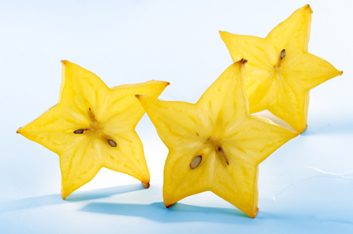
Star fruit
What it is: Shaped like an oval star, this yellow-green fruit has a waxy edible rind. The flesh inside has a mild apple-like flavour.
Take a chance: Star fruit is the ‘superstar’ of fruits when it comes to potassium, says Gina Sunderland, a Winnipeg-based dietitian. “It tops the list for being highest in potassium, which helps maintain normal blood pressure,” she says, adding that, “it’s also a great source of vitamin C, an antioxidant that boosts immune function and fights infection, and beta-carotene which helps with night vision.” To eat one, you can slice it up and pack it for a post-lunch dessert, or layer some slices on top of a bowl of vanilla yogurt.
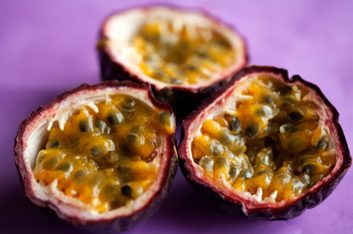
Passion fruit
What it is: This small egg-shaped fruit contains edible seeds and a juicy, sweet-tart pulp . The outer peel or rind of this egg-shaped fruit may be dark purple or light green in colour. The inside pulp and edible seeds are greenish orange, jucy and sweet-tart in flavour.
Take a chance: “The pulp is a great source of fibre, antioxidants and plant sterols which reduce your blood cholesterol levels,” says Natalie Brown, a registered dietitian in White Rock, B.C. The fruit also contains lots of vitamins C and E. To enjoy one, you can scoop the flesh right from the rind, toss it into a fruit salad or juice it for a twist on your morning beverage.
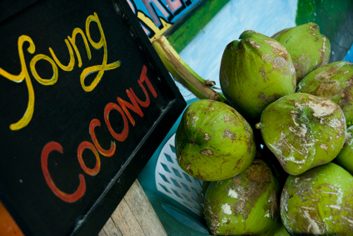
Young coconut
What it is: These are coconuts that aren’t fully developed yet, so they are green on the outside. When you crack one open, you’ll find coconut water surrounded by a tender, sometimes jelly-like flesh.
Take a chance: These coconuts contain magnesium, potassium, iron and the meat itself is a good protein source,” says Brown. “And the water, it’s one of the highest sources of electrolytes.” So after a sweaty workout, replace some of those electrolytes with a coconut water smoothie or juice, or cut up the flesh to stir into yogurt.
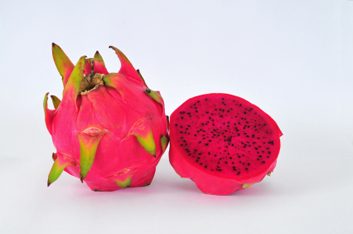
Dragon fruit
What it is: This exotic-looking fruit can often be found in Asian food stores and is easy to spot-look for an oval-shaped fruit with a green tip and flame-like pink spikes on it. Cut it open to reveal white melon-like flesh dotted with black edible seeds.
Take a chance: “This fruit actually comes from a cactus and it’s high in vitamin C and dietary fibre,” says Sunderland. That helps lower your cholesterol and boost your digestive health, and the fibre helps you feel fuller longer. Sunderland suggests whirling one into a smoothie since they are mainly made up of water and easy to blend. You can also cut the flesh into cubes and make it the centerpiece of your fruit salad.
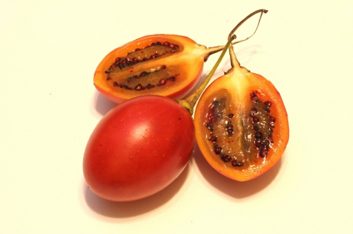
Tamarillo
What it is: This bittersweet fruit, which is sometimes described as tasting like an unripe tomato, is often red-skinned on the outside. Inside, the flesh is orange-green with black seeds. Tamarillos don’t need to be peeled-just wash, slice and enjoy.
Take a chance: What’s not to love? Tamarillos are rich in vitamin C and low in both fat and calories. Add slices to sandwiches in place of tomato, or use it to decorate cheese boards or salads, suggests Sunderland.
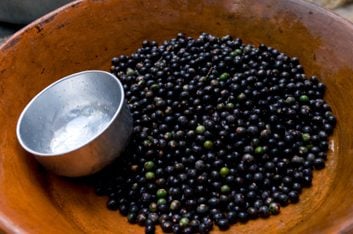
Acai berries
What they are: The “it” fruit of the moment, these look a lot like blueberries.
Take a chance: While it’s often touted as a weight-loss aid, these berries are best eaten for their antioxidant powers, says Brown. “They contain anthocyanins which is the same compound thought to give red wine its health benefits, but [it’s] even stronger in acai berries,” she notes. They’re also a source of protein, fibre and omega 6+9 (which boosts your heart health and lowers your cholesterol). The catch is these berries aren’t usually eaten fresh, so look for them in dry powder form, or drink the juice solo or mixed in a smoothie.
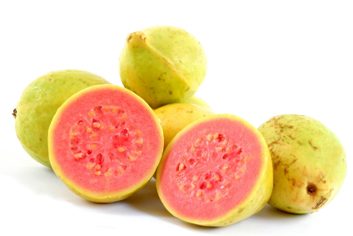
Guava
What it is: This fruit has an edible green rind with bright salmon-coloured flesh inside. The seeds are edible and, as Sunderland notes, the taste is often described as a cross between pears and strawberries.
Take a chance: Eat that rind! It packs five times more vitamin C than an orange. “And it’s high in dietary fibre, especially if you eat the seeds,” says Sunderland. “Guavas also contain lutein, a carotinoid important for eye health, potassium, fibre, calcium and iron.” And while you can bite into this tropical fruit like an apple, you can also chop one up for easy snacking use it to make an exotic salsa.
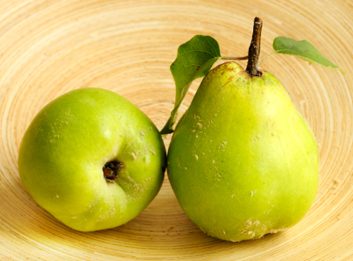
Quince
What it is: A cousin of apples and pears, this greenish-yellow skinned fruit isn’t usually eaten raw like its relatives-the tough, astringent flesh makes that a bit unappetizing. However, it’s wonderful cooked, baked or braised. Try adding it to your favourite for a change.
Take a chance: Quince is packed with vitamin C and calcium, as well as iron. To try one on its own, Sunderland suggests poaching or stewing first. “Quinces tend to hold their shape, so they are ideal for these kinds of cooking or baking,” she says. “But handle them carefully because they can bruise easily.”
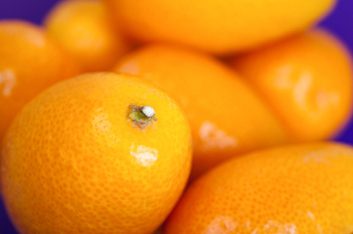
Kumquat
What it is: This fun little fruit looks like a tiny orange, but it has a sweet (and edible) outer skin surrounding a tarter inner flesh.
Take a chance: “Kumquats are rich in vitamin C and contain potassium,” says Sunderland. “They also contain a small amount of fibre, which helps to prevent constipation and to lower levels of harmful LDL cholesterol and stabilize blood glucose.” This is a pack-and-go fruit, so after washing, you can pop a few into a container and throw them in your bag for an afternoon snack. They also pair nicely with bitter salad greens. “You could even try dipping them in melted dark chocolate for a delicious treat,” says Sunderland.
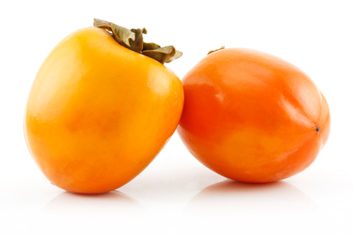
Persimmon
What it is: A bright orange tomato look-alike, this heart- or round-shaped fruit has a taste that’s reminiscent of a mild mango.
Take a chance: “Persimmons are a good source of fibre and both vitamins A and C,” says Brown, who suggests pureeing them to spread over pancakes or stirring into plain yogurt. And while you can eat them fresh, they’re also delicious baked into pies and muffins, or being whirled into smoothies.
Related:
• 7 tips for making super smoothies
• 6 healthy smoothie recipes
• Chicken Burgers with Tropical Fruit Salsa
